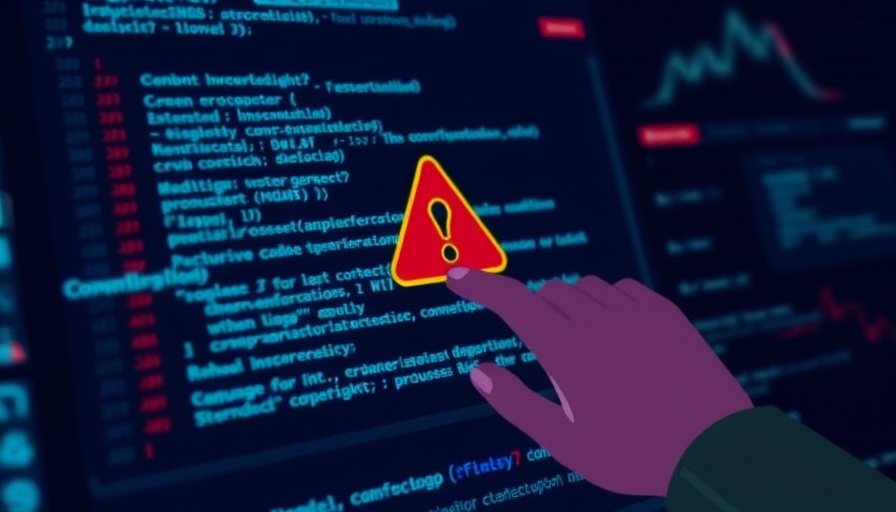
Understanding Crawl Errors and Their Role in SEO
If you’re a small or medium-sized business looking to improve your online presence, knowing about crawl errors is essential. These errors can hinder your website's visibility in search engine results, directly impacting your traffic and potential revenue. Imagine investing time and resources into your website only for it to be virtually invisible to search engines because of issues affecting its crawlability.
What Are Crawl Errors?
Crawl errors happen when search engine bots, like Googlebot, encounter issues while trying to access your site. This can lead to poor indexing, which places a significant barrier between your content and those searching for it. In turn, this can drastically limit your organic reach on search engines.
Types of Crawl Errors
Google categorizes crawl errors into two main types: Site Errors and URL Errors. Understanding the distinction can help you diagnose issues more effectively.
Site Errors: Blockages Across Your Website
Site errors affect your entire website, preventing search engines from accessing any of its pages. For instance, a server error like a “502 Bad Gateway” indicates that your server couldn’t process a request, resulting in a total block of access for bots. This can ultimately lead to a drop in rankings.
Common Site Errors You Might Encounter
- 500 Internal Server Error: Indicates server malfunction, often due to plugins or memory issues.
- 503 Service Unavailable: Indicates server overload or maintenance, presenting a “try again later” message.
- 504 Gateway Timeout: Occurs when server response times out, often due to heavy traffic.
What Are URL Errors?
In contrast to site errors, URL errors pertain to specific pages on your site. These errors can range from a simple typo in a URL to more complex issues like incorrect redirects. A common cause of URL errors is the robots.txt file, which helps guide search engines on the parts of your site to crawl and which to avoid.
Robots.txt Errors
When configured incorrectly, the robots.txt file can inadvertently block important pages from being indexed. For instance, if a critical landing page is disallowed in your robots.txt file, it could be depriving you of essential traffic. Make sure to regularly review and update your robots.txt file to align with your SEO goals.
Tools for Identifying Crawl Errors
Your first line of defense against crawl errors can be Google Search Console (GSC). This tool is instrumental for small and medium-sized businesses, offering insights into how Google sees your site and any issues it might encounter. You can also utilize various SEO tools that provide technical audits to catch and correct crawl errors efficiently.
Future Insights: Avoiding Crawl Errors in a Digital World
As we move deeper into a digital economy where competition is fierce, the visibility of your website can be the difference between success and obscurity. Staying proactive about crawl errors not only improves your chances of ranking higher but also ensures that your customers can find you when they need your services.
Take Action Now for Better SEO
Don't wait until your site loses traffic to start addressing crawl errors. Regular audits using GSC and trusted SEO tools can help you stay ahead of any issues. Small tweaks can have significant impacts on your SEO, bringing newfound visibility and success to your brand.
Closing Thoughts
Keeping your website healthy and accessible is paramount for capturing new customers in a highly competitive landscape. Implementing regular checks for crawl errors can better safeguard your online presence and optimize your opportunities for growth.
 Add Row
Add Row  Add
Add 



Write A Comment